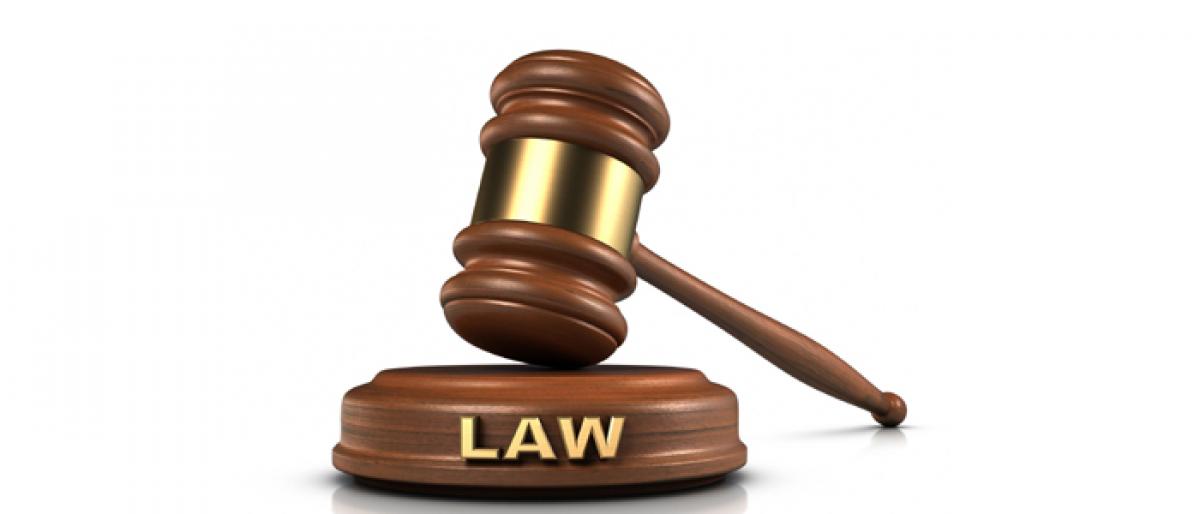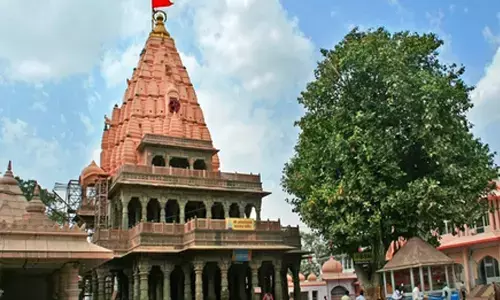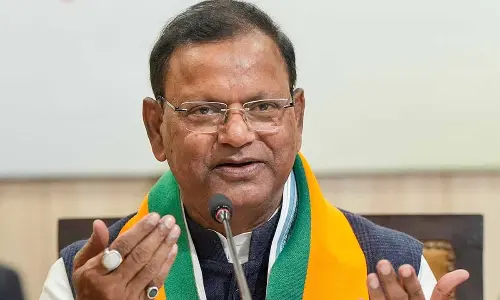Limits of Reservations

The Hyderabad High Court directed the Telangana state government not to exceed the limit of 50 per cent reservations for elections to Panchayat Raj institutions in the state The High Court reminded that the Supreme Court had ordered that the reservations should not exceed 50 per cent
The Hyderabad High Court directed the Telangana state government not to exceed the limit of 50 per cent reservations for elections to Panchayat Raj institutions in the state. The High Court reminded that the Supreme Court had ordered that the reservations should not exceed 50 per cent.
The state government was providing 34 per cent reservations to BCs which would take the overall reservations past the constitutionally stipulated 50 percent limit in the state.
The Telangana government has already announced that it would approach the apex court against the interim order of High court. Therefore, it is appropriate to look into the constitutional provisions and the Indian jurisprudence on the question of 50 per cent limit on the quotas.
The issue is critical for the TRS government for two reasons. First, it is a major promise of KCR government and any failure to achieve the goal of higher reservations can prove to be politically costly for the ruling party.
On the other hand, the state government's proposal to increase reservations in education and employment beyond the 50 per cent is pending before the central government. The Modi government is unwilling to endorse the KCR government's proposal and it adheres to the apex court stipulation of 50 per cent limit on quotas.
It is true that the politics is dominated by few castes to the detriment of weaker sections of society especially the OBCs. The OBCs who roughly comprise more than 50 per cent of state's population are politically marginalised. The demand for social justice within the political sphere cannot be rejected as democracy needs to be representative.
However, the judicial rationale behind such a 50 per cent limit demands a careful examination to understand the whole issue in proper perspective.
The rationale for imposing 50 per cent rule is based on the relationship between affirmative action in the form of protective discrimination and the equality provisions of the Constitution. This is one of balance between competing Constitutional principles of formal equality, social justice and efficiency.
Article 16(4) permits reservations as being an exception to the Constitutional principle of right to equality enshrined in Article 16(1). Since the exception cannot be greater than the rule, the reservations cannot exceed 50 per cent.
Therefore, it is wrong to read the reservations provisions of the Constitution as independent of or superior to equality provisions. Thus, reservations provisions cannot limit the equality provisions, but can only be an extension of it.
In a majority judgement, the Supreme Court in the famous Indra Sawhney Case articulated that balancing various provisions of the Constitution meant that total quotas could not cross 50 per cent.
Article 335 of the Constitution balances its vision of social justice in the form of reservations with the objective of maintaining efficiency of public administration. The limit of 50 per cent on the total reservations is placed to ensure this balance between what seems to be mutually contradictory yet complementary Constitutional provisions.
Any form of protective discrimination in the form of reservations may promote social justice but would have an adverse impact on merit and efficiency which is also a Constitutional vision. Therefore, it is imperative to ensure that one Constitutional provision does not dominate the other.
Caste and class overlap in India to a significant extent. The marginalised castes are marginalised classes. Reservations address the caste-based inequalities. Yet, caste and class are not synonymous. There are other forms of inequalities too. For instance, there are economically backward sections among upper castes even as compared to some of the marginalised caste families.
While accepting the greater similarity between caste and class to justify the reservations despite Constitutional vision of equality, the exception to the principle of caste-class similarity cannot also be ignored.
Reservations policy fails to address other forms of inequalities that transcend caste. Therefore, limiting reservations to 50 per cent would prevent further accentuation of other forms of inequalities that transcend caste.
The Articles 15(4) and 16(4) of the Constitution that enable the state to provide reservations for certain classes are special provisions as enunciated in the said articles itself. In M R Balaji verdict, the Constitutional bench of the Supreme Court held that special provision must be within reasonable limits.
A special provision is not a provision which is exhaustive in character, so that in looking after the advancement of those classes, the state would be justified in ignoring altogether the advancement of the rest of the society. It is because the interests of the society at large would be served by promoting the advancement of the weaker elements in the society.
If a provision which is in the nature of an exception completely excludes the rest of the society that clearly is outside the scope of such a provision of the Constitution, it would be extremely unreasonable to assume that in enacting Articles, the Parliament intended to provide that where the advancement of the Backward Classes or the Scheduled Castes and Tribes was concerned, the fundamental rights of the citizens constituting the rest of the society were to be completely and absolutely ignored.
A Special provision must be within reasonable limits. The interests of weaker sections of society which are a first charge on the state and the Center have to be adjusted with the interests of the community as a whole. Special provision should be less than 50 per cent.
The apex court in Indra Sawhney case stated that the special provisions contemplating reservations only, “speaks of adequate representation and not proportionate representation.” The court further observed: “Adequate representation cannot be read as proportionate representation.”
The Indra Sawhney Judgment held that the provision conceived in the interest of certain sections of society should be balanced against the guarantee of equality which is a guarantee held out to every citizen and to the entire society.
However, there can be exceptions to this rule of 50 per cent limit. The apex court in Indra Sawhney case itself appreciated such extraordinary circumstances that make enforcement of such a limit unwarranted.
The court said, “While 50 per cent shall be the rule, it is necessary not to put out of consideration certain extraordinary situations inherent in the great diversity of this country and the people. It might happen that in far-flung and remote areas the population inhabiting those areas might, on account of their being out of the mainstream of national life and in view of conditions peculiar to and characteristical to them, need to be treated in a different way, some relaxation in this strict rule may become imperative. In doing so, extreme caution is to be exercised and a special case made out.”
This is precisely the reason why the High Court in the same interim order held that 50 per cent limit would not be applicable to Panchayats in the Scheduled Tribe areas.
Tamil Nadu has 69 per cent reservations. The Indra Sawhney Case posed a threat to the Tamil Nadu reservation formula. To protect these reservations, Parliament placed Tamil Nadu quota legislation in the Ninth Schedule of the Constitution. Laws placed in the Ninth Schedule were considered to be immune from judicial review till the later day Constitutional interpretation by the Supreme Court.
The Telangana government hopes to emulate Tamil Nadu model to ensure that its quota formula would not face obstacles.
However, a recent verdict by the apex court held that even the laws in the Ninth Schedule are subject to judicial review if they violate the basic structure of the Constitution.


















